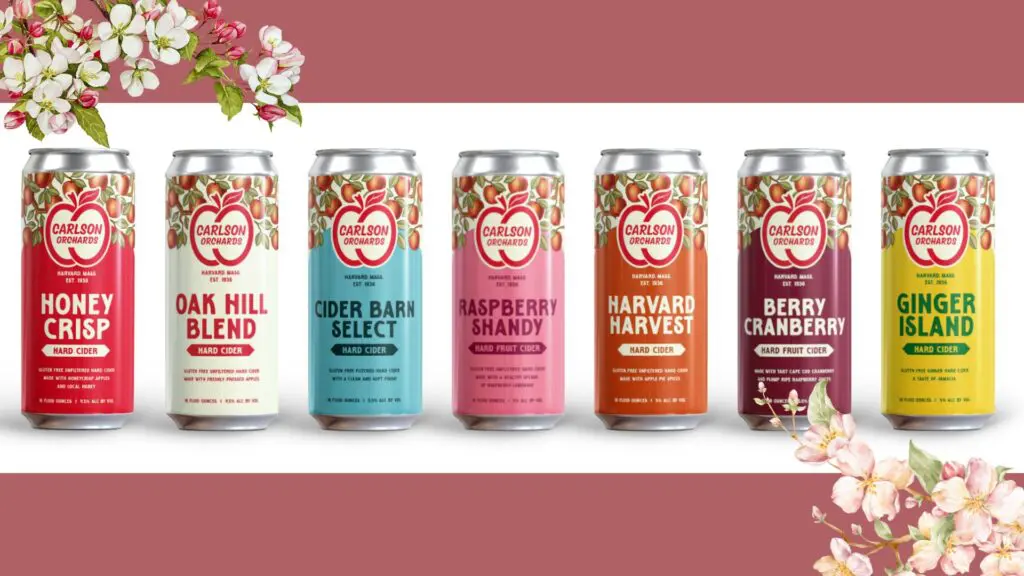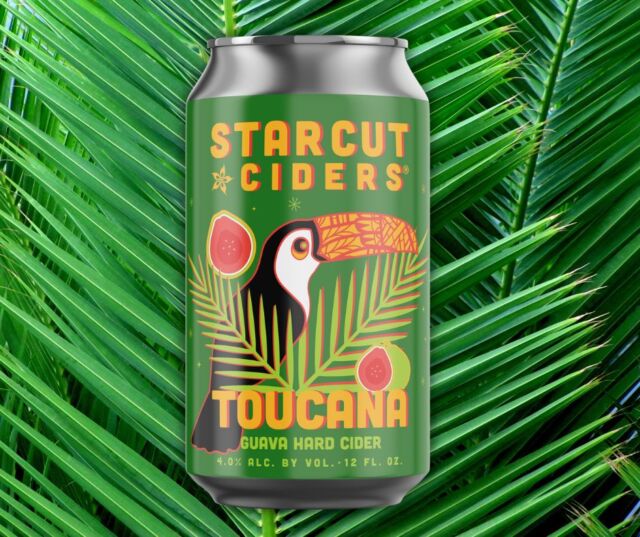It would be fair to say that if a cider enthusiast knows the name of only one apple that is, and always has been, grown specifically to make cider it is Kingston Black. It’s an English apple, small and dark red with some russeting where stem meets fruit. Exactly where and when it was first planted, and by whom, seems to have been lost to the mists of time. The place can be narrowed down to Somerset, and many writers cite the small village of Kingston St. Mary, about six and a half kilometers north of Taunton, England. The time was probably in the middle of the 18th century, since Kingston Black had developed quite a reputation outside its home area by the 1820s. It was included in the varieties grown by the Horticultural Society of London by 1826, and cider made from it sold by name (Taunton Black, one of its synonyms) in Bristol in 1828. It was first introduced into Herefordshire circa 1820, according to 19th century pomologist Robert Hogg, and by the end of the 19th century it was one of the most widely planted varieties in the county.
It wasn’t much grown in the United States until a new generation of cider enthusiasts started planting orchards of well-known European cider-specific apples in the 1990s. Now cidermakers in many parts of the country are making a single variety Kingston Black, making it a perfect candidate for exploring the idea of cider terroir, a concept well established in the wine world but less appreciated when it comes to cider.
The notion that where and how an apple was grown could have a profound impact on the cider first hit me in 2015 when I sat down with a group of friends to blind taste 15 or so Kingston Black ciders from across the U.S. and U.K. The variations in both color and flavor came as quite a shock, so much so that we began to wonder if some of the apples involved weren’t actually Kingston Black. (DNA analysis of samples from two orchards whose ciders were the most different proved they were.)
The chemical variation between a multi-year series of Kingston Black apples/cider from different parts of the country was even more interesting, particularly in how much tannin levels varied with location. The amount of tannin in Kingston Black apples grown in England is generally reported to be in the neighborhood of 2 grams per liter. The tannin levels in the samples taken from orchards in the Northeast — New Hampshire, Vermont and the Finger Lakes — were pretty similar. The ones from the West Coast were, however, considerably higher, often more than double!
There are aroma and flavor differences in the glass as well. The ciders I tasted just recently, mostly with fan of all-things-fermented, Brandon Buza (@the_fermented_life), were similar yet different. They all exhibited some level of baking spice, clove in particular (consistent with many descriptions of Kingston Black) and all had some sort of citrus component. In the West Coast ciders the citrus was orange, sometimes more like fresh juice and other times reminiscent of orange marmalade, and the other flavors were generally riper. In all the other examples, the ciders were tarter and the citrus read more like lemon, either juice or rind, and the other primary fruit flavors zippier. What factor(s) in the West Coast might account for these differences is open to speculation, although the general aridity leading to water stress in the summer months might be a good guess.
It’ll take more years, more ciders, and more comparative evaluations to come to any more definite conclusion. Wherever you are, you can almost certainly access a handful of Kingston Black varietal ciders, though. Why not get a half dozen, invite some friends over and see what you think?
Tilted Shed Ciderworks – Windsor, Calif.
Dry; orange, clove, cinnamon, nutmeg, ripe pear, ripe yellow apple; sparkling
2018 | 9% ABV
Tilted Shed Ciderworks – Windsor, Calif.
Dry; clove, orange rind, ripe melon, pear drop, ripe pear, VA; sparkling
2019 | 9% ABV
Greenwood Cider Company – Seattle
Semi-dry; orange, clove, plum skin, twig, just ripe nectarine, VA; sparkling
6.8% ABV
Snowdrift Cider Company – Wenatchee, Wash.
Semi-dry; orange juice, baking spice, nectarine, yellow apple, apple skin; sparkling
7.5% ABV
Chatter Creek – Seattle
Dry; clove, baking spice, ripe apple, lemon, sour orange, plum; sparkling
9.5% ABV
Slopeswell Cider – Hood River, Ore.
Dry; sour orange, lemon, lemon rind, nutmeg, nectarine, plum skin, clove; sparkling
2019 | 6.9% ABV
Dragon’s Head Cider – Vashon Island, Wash.
Dry; orange marmalade, orange juice, lemon, ripe melon, baking spice; sparkling
2018 | 7.9% ABV
Two K Farms – Suttons Bay, Mich.
Dry; lemon, apple skin, clove, pear, pear skin, grape; sparkling
6.3% ABV
South Hill Cider – Ithaca, N.Y.
Dry; rose, clove, lemon, just ripe pear, lightly ripe banana; sparkling
2017 | 7.9% ABV
South Hill Cider – Ithaca, N.Y.
Dry; lemon juice, clove, green apple, green plum, salt, just ripe pear; sparkling
2019 | 7.9% ABV
Eve’s Cidery – Van Etten, N.Y.
Dry; lemon, baking spice, lemon pith, plum juice, pear; sparkling
2017 | 8.5% ABV
A longer form of this article first appeared at allintocider.com.




















